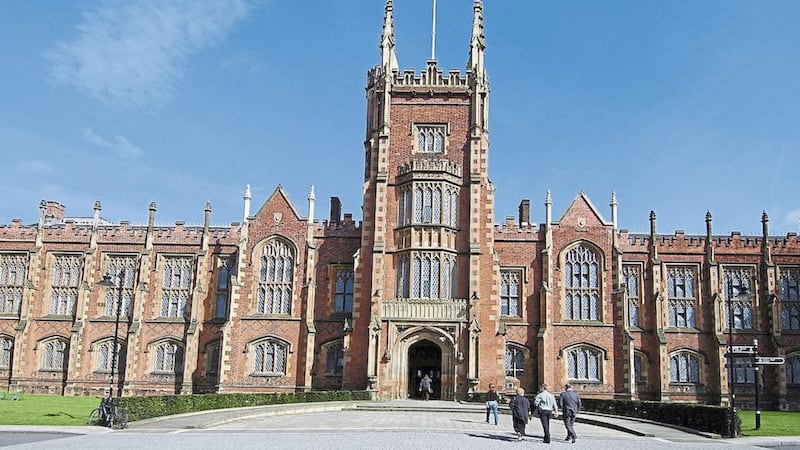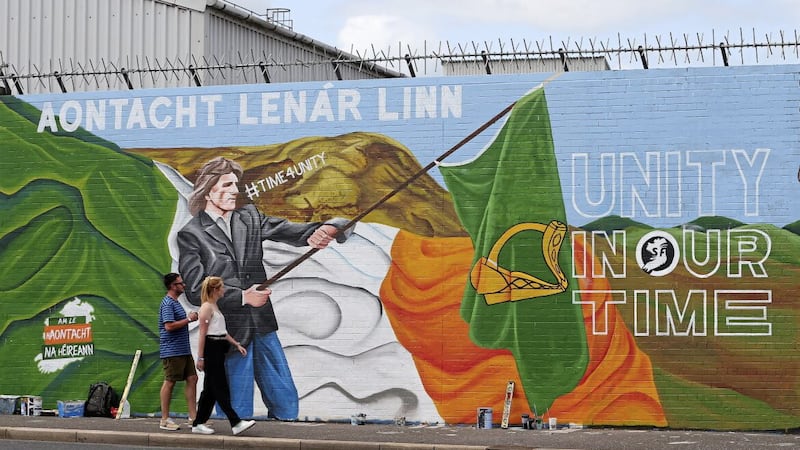An Cumann Gaelach, the Irish Society, is Queen’s University’s third oldest society.
It was formed on January 30 1906, a medical student and east Belfast Protestant William Mac Arthur was elected its first president.
He learned his Irish in Cloch Cheannfhola in Donegal. He joined the British Army and fought during the First World War.
These were the days before partition, when Ireland was united, and before the suffocating hand of unionism squeezed the Irish identity out of the Protestant and unionist people and set up the one-party unionist state which tried and failed to eradicate the Irish cultural identity from the north.
Last month An Cumann Gaelach organised a cultural festival at Queen's and named it Féile Mhic Artúir to honour William’s 114 year-old memory. Irish is an ancient language and it depends, in part, on its historical and rooted memory, for its survival and strength.
The Irish language campaigning activists involved in the Queen's Féile likely walked on the same stones and sat in the same rooms and spoke in Irish and English about the language and its future as William Mac Arthur did with his group of activists in 1906.
Judging from the diverse societies at the university, including employed officers on the Students Union body, you would be forgiven for thinking that Queen’s reflects the cultural spectrum of the life of Ireland and its international students.
You are institutionally welcomed if you are LGBT, Trans, Black and Asian, disabled, woman, pro-choice or pro-life, a member of the Orange Order or a member of any of the political parties organised at the university.
Indeed, the Irish language is represented on the Students Union body and Irish is taught as an undergraduate degree course called an Irish BA. From this course students become teachers and teach the language in schools across Ireland.
Yet for over twenty years Queen's has banned the formal recognition of the Irish language by refusing to display Irish language signs alongside its almost mono-lingual policy of signs in English across the campus.
I say ‘almost’ because dotted across the campus you will find some signage in European and Asian languages.
But you will not find anywhere, dotted or otherwise, Irish language signage.
So, what is, or where is, the blockage in the Queen's University system which is continuing a policy against the Irish language and Irish language speakers?
The university and senate must know that the implications of this policy are not confined to the activists in An Cumann Gaelach or the students at Queen's.
This is an issue that reverberates across the Irish nation and diaspora where the language is loved and cherished.
The Irish language and its treatment are deeply embedded in the psyche of the Irish people; a raw nerve remains exposed from the days of 17th century English colonialism when speaking the language was a criminal offence.
It is bizarre, indefensible and indeed perplexing that a learned and learning institution with the distinguished academic reputation that Queen's has in Ireland and abroad, would allow discrimination against the Irish language and its community.
The moment has arrived for the leaders of Queen's to end this practice. It should not have had to await this moment but decisive action by it now would be timely and welcome for the new period that lies before us in terms of Ireland’s future.
The re-establishment of the executive and assembly and its new unanimity of purpose is in no small measure linked to the decisions made and respect shown to the Irish language in the deal that ended Stormont’s three-year institutional impasse.
Lifting the ban on Irish language signage and introducing a bi-lingual policy with English signage, across the campus, would complement the welcome changes at the executive and assembly.
Let Queen's avail of the imminent release of its ‘New Equality and Inclusion Policy’ to announce a new policy of bi-lingual recognition for the Irish and English languages.
An outcome, I think, would suit a former British soldier and Protestant from east Belfast and the members of Queen's An Cumann Gaelach.








